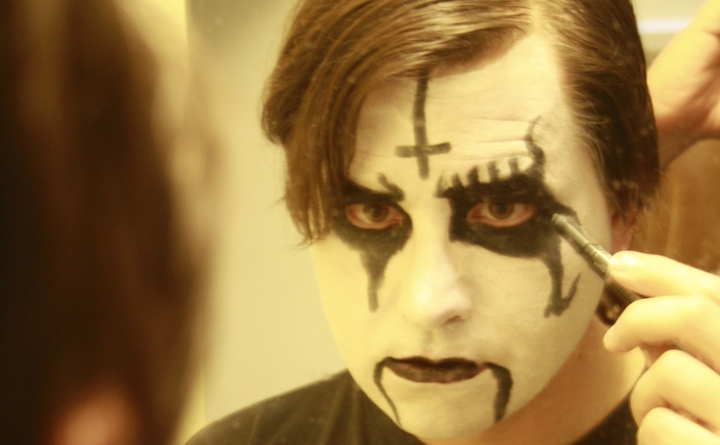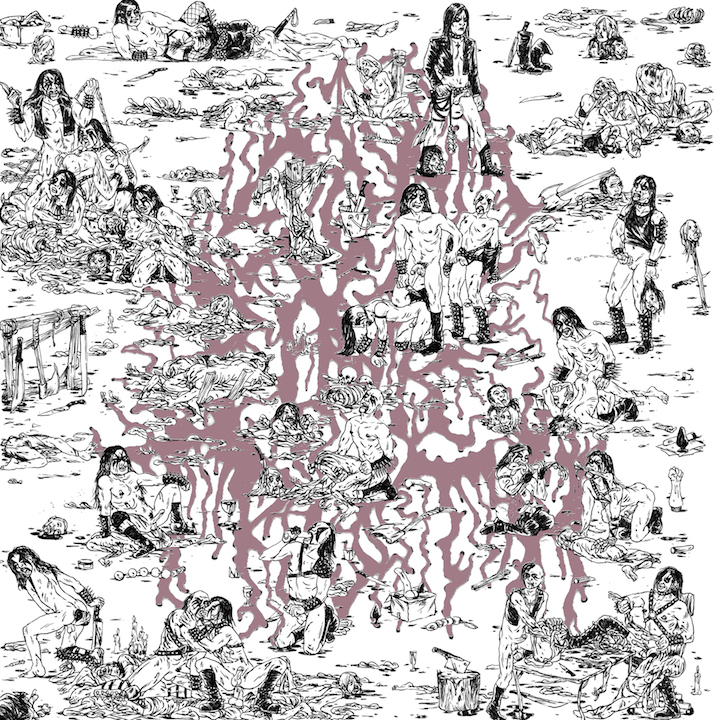
The Soft Pink Truth’s Why Do the Heathen Rage?
At first blush there’s not much to connect the worlds of dance music and black metal. Dance music is primarily rhythmic, communal and hedonistic in intent, and historically associated with black, latino, gay and trans cultures; black metal is primarily textural and atmospheric, individualist and cathartic in intent, and born from a subculture of white and straight Scandinavian males—violently white and straight Scandinavian males, several of whom have been convicted of hate crimes.
Much of the appeal of The Soft Pink Truth’s new album, Why Do the Heathen Rage?, therefore comes from the frisson generated by the juxtaposition of these two very distinct musical genres and scenes. As its subtitle, ‘Electronic Profanations of Black Metal Classics’, indicates, the album is a collection of key songs from the black metal corpus reinterpreted as some explicitly queer and techno-tinged house anthems. However, there’s more to Why Do the Heathen Rage? than the pleasure of hearing po-faced, corpse-painted black metal turned into a vehicle for very queer forms of musical pleasure.
First and foremost, Why Do the Heathen Rage? demonstrates that despite their superficial differences, dance music and black metal have a lot in common. Both are oppositional musics born out of resistance to oppression: dance music as we know it emerged in New York City discos where a racially diverse gay, lesbian, and trans community celebrated its existence in spite of the visceral animosity that the dominant culture showed towards it; black metal began as a means to critique a form of Christian modernity prevalent in Scandinavia, and, in so doing, negatively articulate a neo-pagan or satanic nationalist alternative.
More than that, though, they share similar musical features: a disdain for traditional verse/chorus song structures; a fondness for repetition and extended duration; and an interest in deploying vocals as a texture or instrument rather than as a song’s focus. Why Do the Heathen Rage? makes explicit these connections, and in so doing implicitly poses the question of what historical contingencies made the two musical scenes so different—indeed, almost antithetical.
The conceptual sophistication in bringing together these two musical forms isn’t surprising when you consider The Soft Pink Truth’s pedigree as the dance-oriented solo project of Matmos’ Drew Daniel. Daniel is a latter-day polymath—not only a member of one of Björk’s favourite bands, but also an assistant professor specialising in Shakespeare at Johns Hopkins University and the author of an excellent book about Throbbing Gristle’s 20 Jazz Funk Greats.
Importantly, he is also a gay man who has worked extensively in the field of dance music while also being an ardent black metal fan despite what he sees as its very dubious politics. Why Do the Heathen Rage? comes with an essay penned by Daniel entitled ‘Confessions of a Former Burzum T-shirt Wearer’, which goes some way towards articulating his unease at being a fan of black metal and in some sense complicit in its less savoury aspects. Daniel has also put theory to practice by dropping a cover of Burzum’s ‘Rundgang’ from the album’s tracklist in order to deny Varg Vikernes any royalties from the album (the cover has instead been released online for free with the subtitle ‘Fuck Varg’s Racist, Anti-Semitic Bullshit Politics Forever!’).
As you might hope, there are some incredible moments of cleverness in Why Do the Heathen Rage?: a snippet of audio from gay bareback porn has been spliced on top of the line “Riding hell’s stallions/bareback and free” in Venom’s ‘Black Metal’; a guest vocal from Wye Oak’s Jenn Wasner transforms Sarcófago’s ‘Ready to Fuck’ from an ode to heteronormative sex to a house anthem about a strap-on dildo; and there are any number of samples scattered throughout these covers that enter them into an intertextual dialogue with core songs from the house music canon (plus, erm, Snap!’s ‘The Power’).
It even concludes with a parodic inversion of an existing parody of black metal (Impaled Northern Moonforest, a jokey side-project from AxCx’s Seth Putnam), and its cover—a line drawing featuring black metal longhairs in an orgy of gay sex and butchery—is entirely consistent with its premise. If there’s one criticism to venture of Why Do the Heathen Rage?, it’s that its hand-in-glove fit between concept (capably articulated by Daniel himself in the liner notes) and execution leaves the listener very little interpretative room. Daniel has contructed an impressive metatextual edifice, but one tightly and rigorously controlled, where the only sense of play possible is in Daniel’s own queer profanations.
